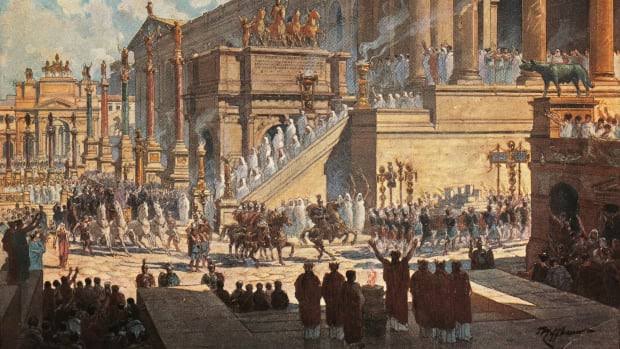Cyrus and Persian Civilization

Cyrus the Great was a Persian emperor who founded the Achaemenid Empire in the 6th century BCE who played a significant role in the development and expansion of Persian civilization.
Cyrus conquered neighboring territories and united them under his rule to create the Achaemenid Empire. The empire spanned from the Aegean Sea to the Indus River and included a diverse array of peoples and cultures.
Religious Policies
Cyrus the Great is known for his policies of religious tolerance, which were uncommon in his time. He respected the beliefs and practices of conquered peoples and did not force them to conform to a single religion or ideology.
Here are some of his notable religious policies:
- Restoration of religious artifacts: When Cyrus conquered Babylon in 539 BCE, he ordered the restoration of religious artifacts that had been seized by previous conquerors. He returned these artifacts to their original temples and allowed the people to practice their religions freely.
- Support for Jewish exiles: He supported the Jewish exiles who had been captured and taken to Babylon by the Babylonian Empire and issued a decree allowing the Jews to return to their homeland and rebuild their temple in Jerusalem.
- Respect for local customs: Cyrus respected the local customs and beliefs of conquered peoples, and did not try to impose his own religion on them. He even allowed the Babylonians to continue practicing their religion, despite his own Zoroastrian faith.
- Freedom of worship: Cyrus promoted freedom of worship throughout his empire and allowed people to worship whichever gods they chose, as long as they did not engage in human sacrifice or other practices that he deemed harmful.
His religious tolerance set an important precedent for later Persian and World rulers and influenced the development of the region’s religious traditions
His respect for diversity and freedom of worship is still celebrated in Iran today.
Infrastructure development
As a visionary leader who invested heavily in infrastructure development throughout his empire.

He understood that a well-developed infrastructure was critical for the efficient governance of his vast and diverse empire.
Following are the infrastructure development initiatives are:
- Construction of roads and bridges: He oversaw the construction of a network of roads and bridges that connected different parts of the empire, so this allowed for easier transportation of people, goods, and information, which in turn facilitated trade and commerce.
- Building of the Royal Road: Cyrus is also credited with the construction of the Royal Road, a 1,500-mile-long highway that ran from Susa, the capital of Persia, to Sardis, the capital of Lydia. The Royal Road was a key trade route and allowed for faster communication between different parts of the empire.
- Creation of a postal system: He is said to have established a sophisticated postal system that allowed messages to be sent quickly and efficiently across the empire. This system relied on a series of way stations where messengers could rest and exchange horses, ensuring that messages could be delivered quickly.
- Establishment of a system of governance: He created a system of governance that allowed for efficient communication and administration across the empire. He divided the empire into provinces, each of which was governed by a satrap, or governor. The satraps were required to report to the central government in Susa, ensuring that Cyrus had a firm grip on the administration of his empire.
His infrastructure development initiatives were critical in facilitating communication, transportation, and trade which laid the foundation for the Persian Empire’s success and influence in the ancient world
Business
He played a significant role in promoting business throughout his empire. He understood the importance of trade for the economic prosperity of his kingdom, and his policies helped to facilitate the growth of trade networks across the ancient world.
The notable business policies and initiatives are as under:
- Encouragement of trade: Cyrus encouraged trade and commerce by promoting the use of standardized weights and measures and establishing a common currency and reduced trade barriers and encouraged merchants to travel freely throughout the empire.
- Development of a trade network: He enforced the development of a vast trade network that linked the Persian Empire with other parts of the ancient world. This network included trade routes that ran from the Aegean Sea to the Indus River, allowing for the exchange of goods and ideas across different cultures.
- Expansion of markets: Cyrus established new markets and trading centers throughout the empire, creating opportunities for merchants to buy and sell goods and encouraged the development of local industries, which helped to stimulate economic growth.
- Promotion of urbanization: Cyrus promoted urbanization by encouraging the growth of cities and towns throughout the empire which created new opportunities for trade and commerce and helped to foster economic development.
His trade policies and initiatives played a crucial role in the economic success of the Persian Empire
Arts and Culture
Cyrus understood the importance of promoting art and culture as a means of creating a shared identity among the diverse peoples of his empire.
His Key initiatives in art and culture are:
- Promotion of Persian culture: Cyrus promoted Persian culture throughout his empire by encouraging the use of the Persian language and the adoption of Persian customs and traditions and supported Persian art, music, and literature, which helped to establish a distinctive Persian identity.
- Tolerance of other cultures: While promoting Persian culture, Cyrus was also tolerant of other cultures and allowed conquered peoples to retain their own traditions and practices which led to a rich cultural exchange, with Persian and other cultures influencing each other in various ways.
- Construction of impressive buildings: Cyrus oversaw the construction of impressive buildings throughout his empire, including palaces, temples, and fortresses. These buildings were not only functional but also served as symbols of the power and grandeur of the Persian Empire.
- Support for the arts: Cyrus supported the arts by patronizing artists and musicians and commissioning works of art. He is said to have been an accomplished musician himself, and he encouraged the development of Persian music and dance.
We can say that Cyrus the Great’s initiatives in art and culture helped to create a sense of shared identity among the diverse peoples of his empire
His promotion of Persian culture and tolerance of other cultures helped to foster a rich cultural exchange that influenced the development of art and culture in the ancient world.


